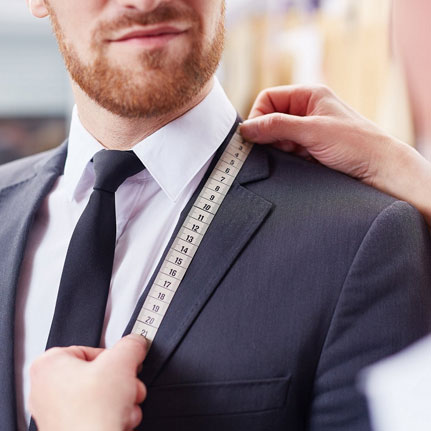A well-fitted suit is a polished wardrobe basic for wearing to business meetings, weddings, or special occasions. Even the best-costing suit may not become a perfect one if it does not fit your body type well. Therefore, a suit alteration becomes necessary. An altered suit fits your physique; thus, it adds confidence and charisma to an individual’s projection. Here, we explore the essential suit alterations every man should consider to achieve that perfect fit.
Why Suit Alteration Matters
Ready-made suits fit a wide number of body types. But no two men are truly alike. Slight deviations from a good profile show sloppiness. A good suit alteration transforms a standard-size suit into one that simultaneously fits, looks good, and inspires confidence. Investing in tailoring can extend the life of your wardrobe essentials and is frequently more affordable than buying a new suit.
The Key Suit Alterations to Consider
1. Taking in or Letting Out the Waist
The waist is important for that sleek silhouette. A jacket with a little tightness restricts movement and button pulling, whereas the loose version would look baggy and untidy. A tailor might alter the waist so that it hugs the torso, giving it that sharply tailored appearance; this alteration is widely made to an off-the-rack suit that does not suit a person’s body shape.
2. Adjusting the Sleeve Length
The sleeve length is probably the most visible clue to how well a suit fits. Ideally, one-quarter to one-half inch of the shirt cuff should show from underneath the jacket sleeve. If your sleeves are either too long or too short, alterations can help. Shortening or lengthening the sleeves to ensure the right proportions between your shirt cuffs and jacket sleeves is a crucial step toward looking polished.
3. Nipping the Shoulders
Arguably, the shoulder fit is the most prominent factor in how a suit fits. When the shoulder seams are past one’s natural shoulder line or too tight, they can throw the entire look off. While shoulder alterations are more complex and costly, they can immensely amplify the suit’s overall silhouette. The tailor can reshape or add padding to the shoulders for a flawless fit.
4. Hemming the Trousers
The right length for trousers is all-important for a polished look. Too long, and the trousers will gather at your shoes; too short, and it’s so awkward-looking. The standard break is generally preferred, with the pants just barely creasing over the top of your shoes. Suit alteration to hem trousers ensures they sit perfectly, whether you prefer a slight break or a no-break look.
5. Taking in or Letting Out the Pants Waist
Much like the jacket, the trousers’ waist can often need adjustment. A perfectly fitted waist allows the pants to be comfortable without gaping or feeling tight in their fit. This alteration works by removing excess fabric or inserting fabric panels whenever they are needed, ensuring a smooth, tailored look.
6. Reshaping the Jacket’s Chest and Back
For that slimmer-looking jacket, some men look into the possibility of altering and slimming down the jacket’s chest or back. Particularly if the jacket is boxy and lacks shape, this alteration can give a silhouette tailored to complement your body.
When to Consider Suit Alterations
After purchasing an off-the-rack suit: Even new suits often require some tweaks.
If your weight fluctuates: Regular alterations help maintain a sharp look.
For special events: Tailoring ensures your suit looks its best for important occasions.
When buying a custom or semi-custom suit: It’s more likely to fit perfectly, but minor adjustments may still be needed.
Always consult a professional tailor who specializes in men’s suits. They can advise you on the most suitable alterations based on your body type and style preferences. With a few strategic adjustments, your suit can look custom-made, making you stand out in any crowd.
